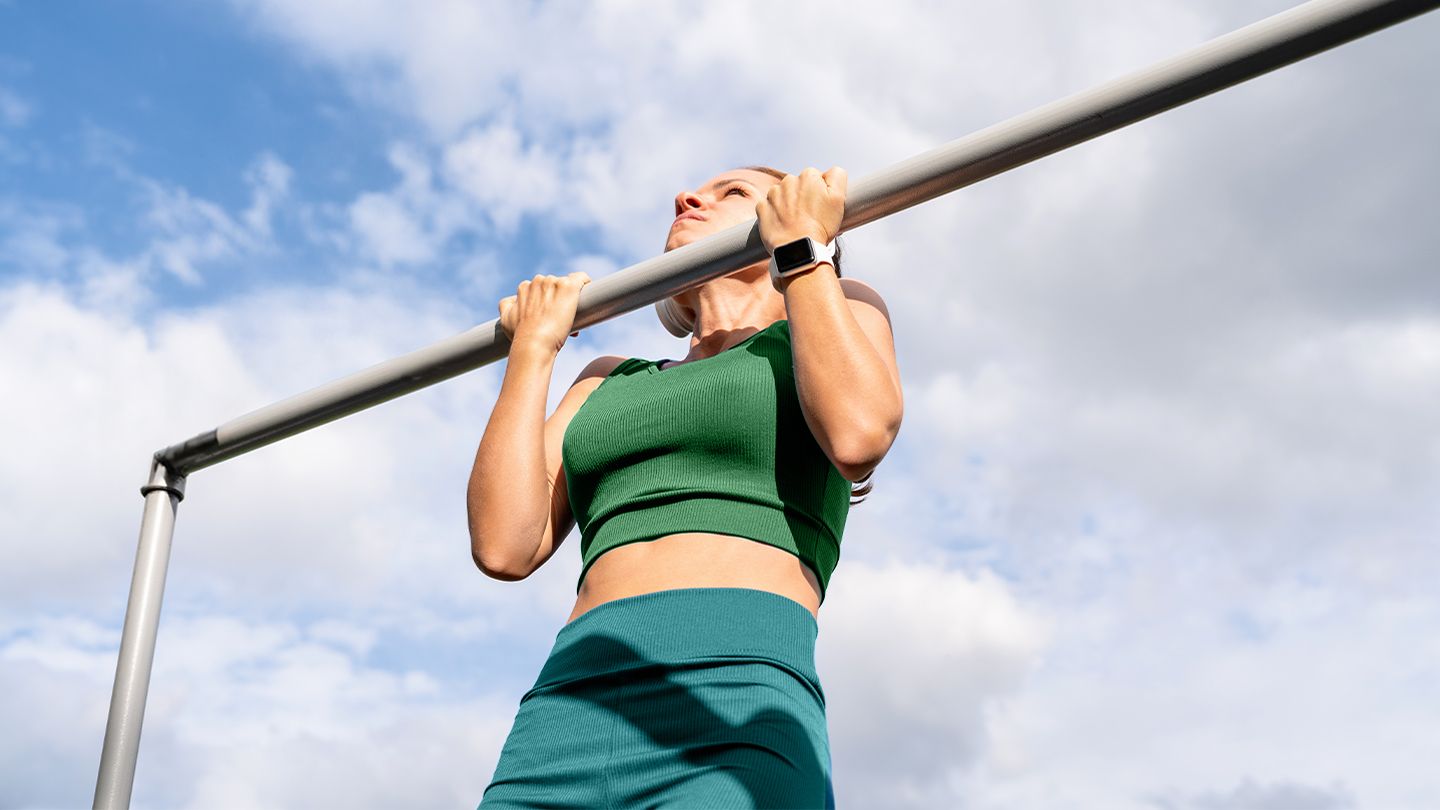If you’re wondering if pullups are bad for your shoulders, you may be relieved to learn that this exercise is not inherently dangerous, unlike some upper-body exercises that put your shoulders in a compromised position. However, because of the overhead position and movement involved in the pullup, you could experience a rotator cuff injury.
Reduce your risk of injury by avoiding certain styles of pullups and by proactively strengthening your rotator cuff muscles.
Rotator Cuff Muscles
The rotator cuff is a group of four muscles — teres minor, infraspinatus, supraspinatus, and subscapularis — located around your shoulder blade. They are responsible for stabilizing the highly mobile shoulder joint.
The rotator cuff muscles are active anytime you move your shoulder, making them prime candidates for injury. Types of rotator cuff injuries include overuse tendinitis, tears, and impingement syndrome, according to Mayo Clinic.
Are Pullups Bad for Shoulders?
Biological factors, such as the structure of your shoulder joint, can make you more susceptible to a rotator cuff injury. You can injure your rotator cuff muscles if you fall on your shoulder or sustain trauma to the shoulder.
Other, more subtle causes of rotator cuff injury include repetitive stress on the shoulder or repetitive shoulder motions, especially overhead movements such as the motion that occurs during pullups.
The pullup movement puts the shoulder joint in a compromised position of external rotation with significant loading on the rotator cuff muscles.
Be sure to perform pullups properly to reduce the risk of injury, as demonstrated by ExRx.net:
- Grip the bar with your hands outside your shoulders.
- Contract your glutes and abs to keep your core engaged throughout the movement.
- Bend your elbows and raise your body until your chin is above the bar.
- Lower back down until your elbows fully straighten.
Pullups With Rotator Cuff Injury
If you do pullups regularly, the constant overhead motion can make you prone to a rotator cuff injury. Replace the pullup with a different exercise that works the same muscles, such as the bent-over row or seated row.
You can also use different pullup grips, particularly if you are doing pullups with a rotator cuff injury. A neutral-grip pullup with your palms facing each other reduces the stress on the shoulder joint during the movement, as your shoulders do not externally rotate.
Some pullup variations are more likely to result in a rotator cuff injury than others. Avoid behind-the-neck pullups or rear pullups, as demonstrated by weightlifting website Inspire US. This exercise requires you to pull yourself up until the back of your neck touches the bar, placing your shoulders in extreme external rotation and increasing your risk of injury.
Prevent Further Injury
To reduce the likelihood of a rotator cuff injury, proactively train to strengthen the rotator cuff muscles. Use light weights to perform a series of internal and external shoulder rotation exercises, as demonstrated by OrthoInfo.
Stop pullup movements if you feel any pain while exercising. Consult a physician if you have shoulder pain, numbness, or weakness.
Read the full article here




